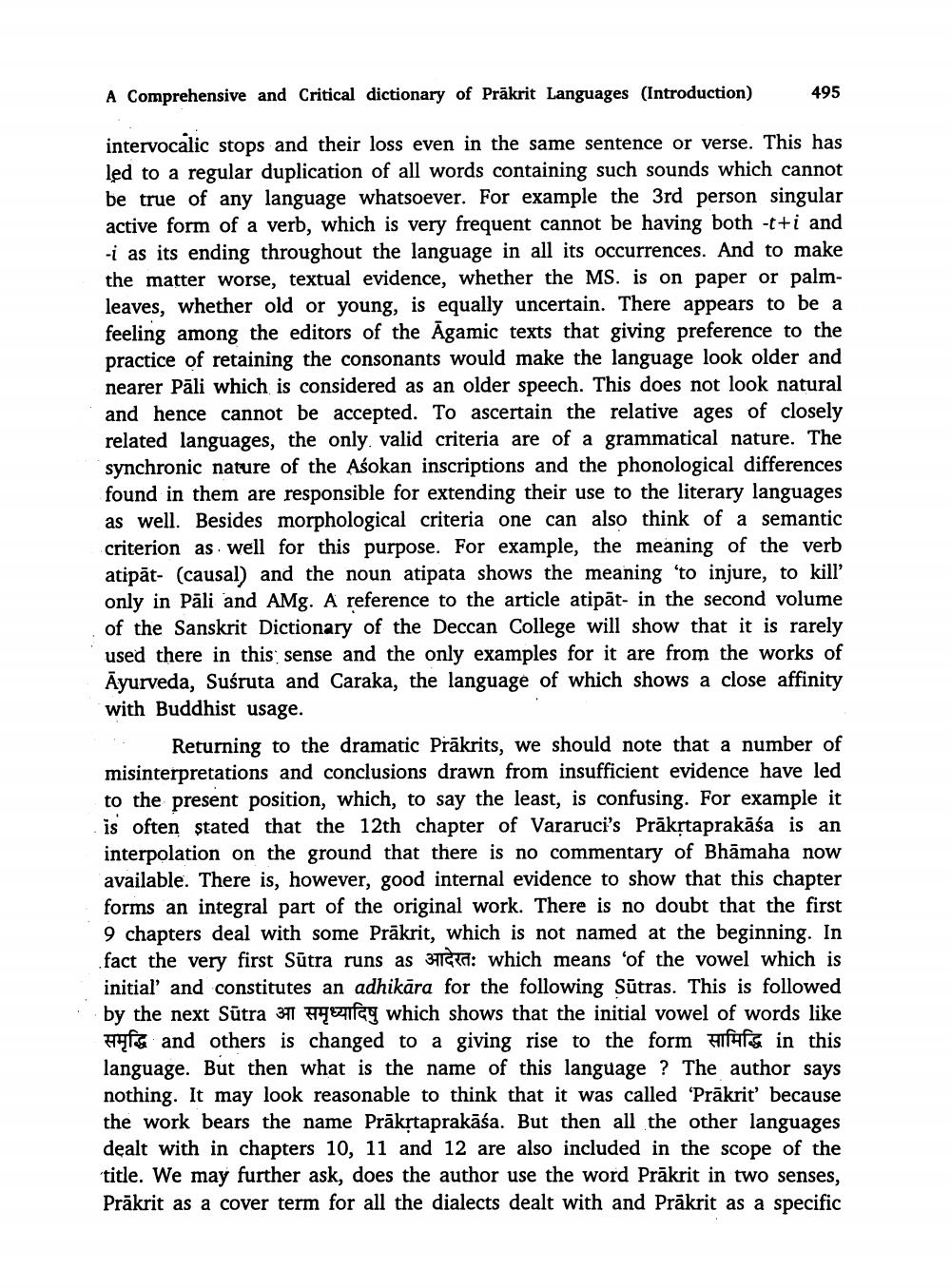________________
A Comprehensive and Critical dictionary of Prākrit Languages (Introduction)
495
intervocalic stops and their loss even in the same sentence or verse. This has led to a regular duplication of all words containing such sounds which cannot be true of any language whatsoever. For example the 3rd person singular active form of a verb, which is very frequent cannot be having both -t+i and -i as its ending throughout the language in all its occurrences. And to make the matter worse, textual evidence, whether the MS. is on paper or palmleaves, whether old or young, is equally uncertain. There appears to be a feeling among the editors of the Āgamic texts that giving preference to the practice of retaining the consonants would make the language look older and nearer Pāli which is considered as an older speech. This does not look natural and hence cannot be accepted. To ascertain the relative ages of closely related languages, the only valid criteria are of a grammatical nature. The synchronic nature of the Asokan inscriptions and the phonological differences found in them are responsible for extending their use to the literary languages as well. Besides morphological criteria one can also think of a semantic criterion as well for this purpose. For example, the meaning of the verb atipāt- (causal) and the noun atipata shows the meaning 'to injure, to kill only in Pāli and AMg. A reference to the article atipāt- in the second volume of the Sanskrit Dictionary of the Deccan College will show that it is rarely used there in this sense and the only examples for it are from the works of Āyurveda, Suśruta and Caraka, the language of which shows a close affinity with Buddhist usage.
Returning to the dramatic Prākrits, we should note that a number of misinterpretations and conclusions drawn from insufficient evidence have led to the present position, which, to say the least, is confusing. For example it is often stated that the 12th chapter of Vararuci's Prākstaprakāśa is an interpolation on the ground that there is no commentary of Bhāmaha now available. There is, however, good internal evidence to show that this chapter forms an integral part of the original work. There is no doubt that the first 9 chapters deal with some Prākrit, which is not named at the beginning. In fact the very first Sūtra runs as 3 : which means of the vowel which is initial and constitutes an adhikara for the following Sūtras. This is followed by the next Sūtra 371 Hzcy which shows that the initial vowel of words like
to and others is changed to a giving rise to the form i s in this language. But then what is the name of this language ? The author says nothing. It may look reasonable to think that it was called 'Prākrit' because the work bears the name Prākrtaprakāśa. But then all the other languages
It with in chapters 10, 11 and 12 are also included in the scope of the title. We may further ask, does the author use the word Prākrit in two senses, Prakrit as a cover term for all the dialects dealt with and Prākrit as a specific




